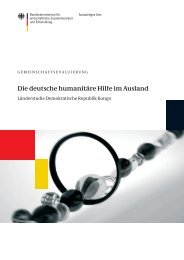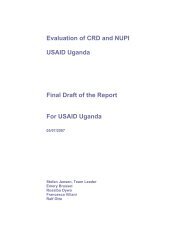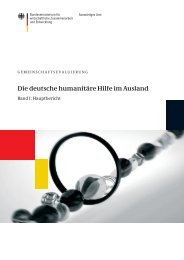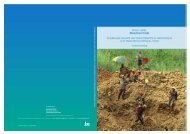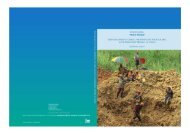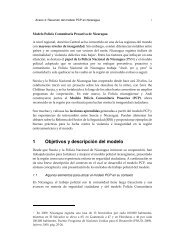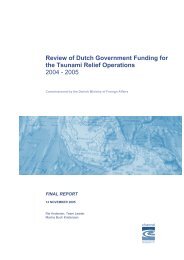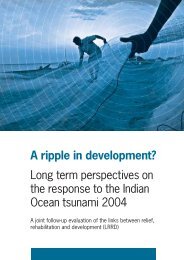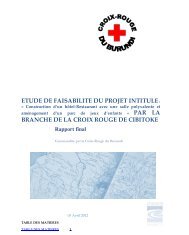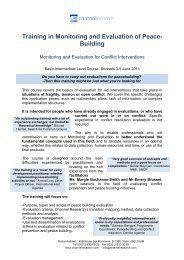German Humanitarian Aid Abroad - Channel Research
German Humanitarian Aid Abroad - Channel Research
German Humanitarian Aid Abroad - Channel Research
Create successful ePaper yourself
Turn your PDF publications into a flip-book with our unique Google optimized e-Paper software.
some form of food assistance due to the fact that harvests have not yet materialised and –<br />
more importantly – that many areas of Karamoja are not suitable for agriculture.<br />
Food security and ‘humanitarian agriculture’ in drylands<br />
GTZ, Welthungerhilfe and the DRK are supporting basic forms of agriculture with seeds,<br />
tools and training, notably through farmer field schools. As food is a strong pull- and stayfactor<br />
for returning IDPs, all measures helping re-settled communities to gain food selfsufficiency<br />
are highly relevant in the return areas of former IDPs in the Western and Central<br />
parts of Northern Uganda. Some of the agricultural support is, however, provided in zones,<br />
where agriculture is not reliable due to low rainfall in general and due to the increasing<br />
unpredictability of rain as an effect of climate change. In addition to the questionable zoning<br />
of agricultural support, the promoted methods of farming are not fully appropriate. Too little<br />
emphasis is given to water-harvesting and water conservation practices and too little<br />
emphasis is put on the integration of more drought-resistant tree crops. While currently<br />
promoted methods of farming may well be successful in an exceptionally wet year like 2010,<br />
in a ‘normal dry year’ harvest will stay well below the potential of properly implemented<br />
77<br />
conservation farming.<br />
The integration of livestock into food security projects to buffer harvest failures of (annual)<br />
crops was generally unsatisfactory. However, the evaluation team acknowledges the<br />
78<br />
challenges involved in integrating livestock in emergency and rehabilitation projects as well<br />
as the immense problems in Karamoja where livestock exposes owners to attacks of cattle<br />
rustlers.<br />
“… one good harvest is not food security …”<br />
In the Western and Central Northern Uganda, agriculture is basically the only means for an<br />
immediate recovery of livelihoods for the vast majority of returning IDPs. In Karamoja Subregion,<br />
only limited areas are viable for agriculture, notably in the so-called greenbelt,<br />
stretching north-south between Katakwi and Moroto and the eastern part of the sub-region.<br />
The biggest threat to agriculture across Northern Uganda has (increasingly) been the<br />
unreliability – if not total failure – of rainfall.<br />
The large-scale distributions of seeds, cassava-cuttings, and tools are important<br />
interventions to kick-start food production, and, eventually, food self-reliance. The selection<br />
of seeds rightly puts emphasis on drought-resistant crops such as sorghum and millet. The<br />
threat of harvest failure was much higher where cassava, groundnuts, sweet potatoes,<br />
maize, and vegetables are used. In three technical areas, the ‘humanitarian agriculture’<br />
interventions remain unsatisfactory:<br />
• Water conservation techniques, for example through micro-catchments, contour lines,<br />
zero-tilling or mulch cover has nowhere been observed in demonstration plots or on<br />
fields of beneficiaries;<br />
• Diversification of crops in view of flood- and drought-induced crop failures, especially<br />
through integration of drought resistant trees (fruits, fodder, firewood, raw material for<br />
80<br />
charcoal) have – with exceptions – not received the necessary attention,<br />
77 See www.conservationfarming.co.za for an introduction to conservation farming<br />
78 There is, however, relevant guidelines and standards available for this type of interventions (LEGS<br />
2009)<br />
79 Government official in one of the visited districts.<br />
79<br />
31



